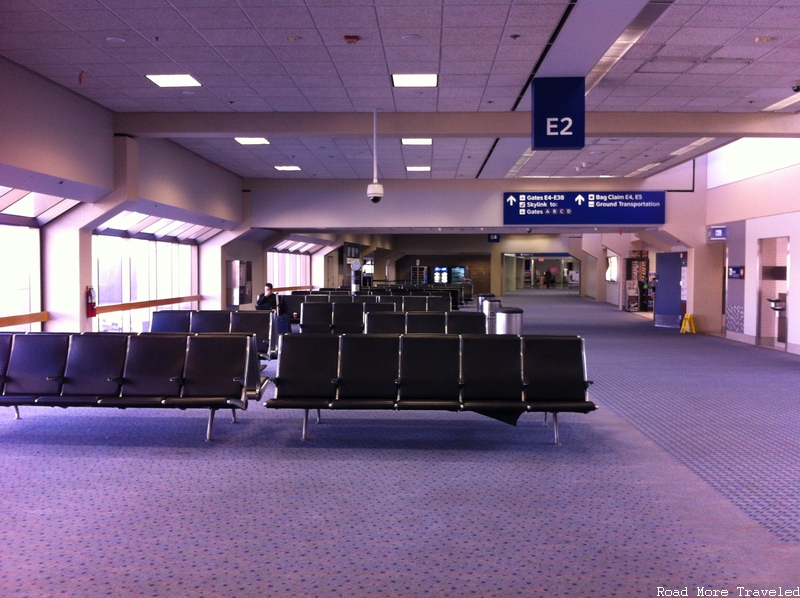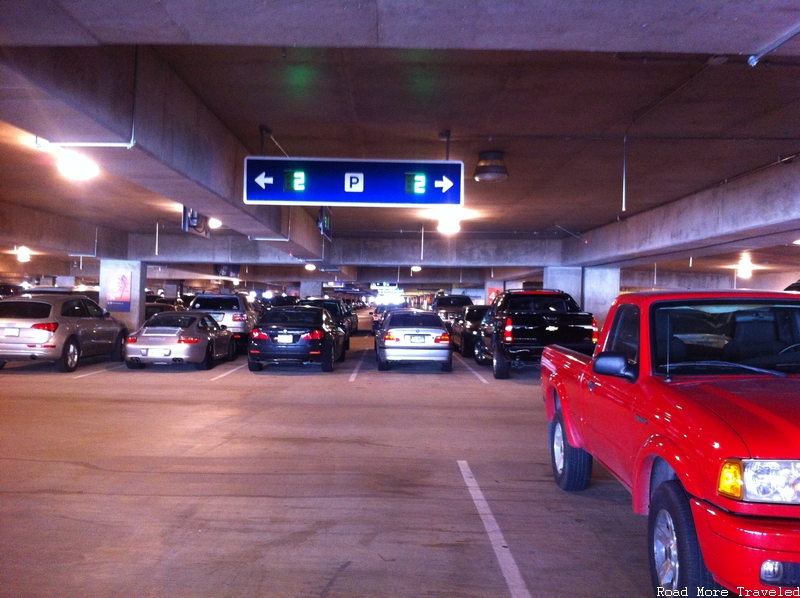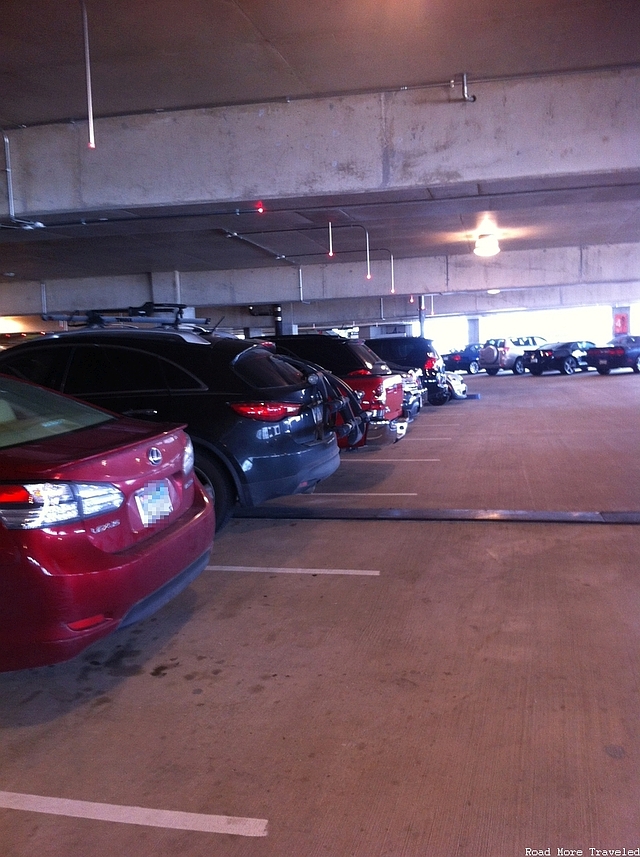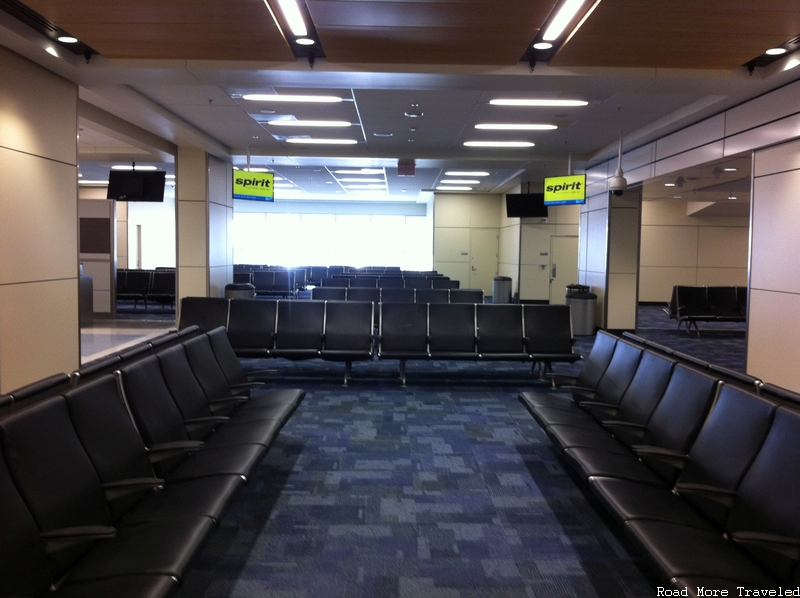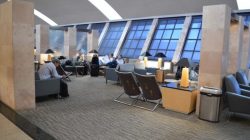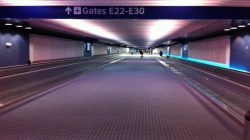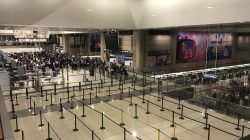Starting in 2015, DFW Airport embarked on a $2.7 billion terminal renovation, “TRIP” (Terminal Renewal and Improvement Program). The new and improved Terminal A came online first, with construction completed in January. In late August, DFW celebrated the completion of the second phase of TRIP, a renovated Terminal E. Though Terminal E sees relatively little traffic today, at 43 years old, it definitely felt a little long in the tooth. The refresh definitely gives “Easy Street” a fresh look, though most changes are pretty subtle.
Why the Nickname “Easy Street”?
I provided a detailed history of Terminal E a couple of years ago, but I’ll briefly touch on the “Easy Street” moniker here. Terminal E used to be the home of Delta’s DFW Airport hub, once handling 350+ flights a day. Delta then coined the term “Easy Street” to highlight a competitive advantage over American Airlines. Anyone who connected through DFW prior to the Skylink train in 2005 knows the issue. Spread over three terminals without airside connections, connections on AA meant trouble. Changing terminals meant a bus or train transfer and re-clearing security. Any connection under 90 minutes entailed risk, especially if your first flight ended up in the penalty box.
Enter Delta, with its operation consisting of 25 gates in Terminal E – hence “Easy Street”. At most, a connection meant 10 minutes walking from the satellite terminal to the main building. Needless to say, that made for a compelling argument to choose Delta over AA. (If you lived in DFW in the 80s or 90s, you may remember the ads in the Dallas Morning News.) Unfortunately for Delta, the argument never really resonated, and the airline consistently lost money at DFW. It pulled the plug on the hub in 2005.
Terminal E Before the Refresh
Prior to TRIP, Terminal E looked much as it did when it opened in 1973, save for a minor facelift in the 1980s. The airport’s signature blue carpet definitely passed its sell-by date about 10 years ago. Low ceilings meant a lack of natural light in the gate areas. And the lack of power ports also posed a substantial problem in the age of multiple portable electronic devices.
Meanwhile, free internet stations hearkened to the days of slow, expensive WiFi. And these were one of the few places you could plug in a computer or phone. (At these stations, you could connect an ethernet cable to your laptop for free internet. Today, AT&T provides free WiFi throughout the airport.)
In short, Terminal E remained functional, especially with only 90-something flights a day over 36 gates. But it definitely needed a facelift.
Terminal E After the Renovations
You’ll notice some important changes when you arrive at the terminal to park your car. Terminal E features the same “smart” garages found in Terminal A. First, signs point you in the right direction of open spaces.
The most useful improvement, though? Lights above each space that indicate whether the space is occupied or not. Red indicates occupied, green means open. They’re designed so that you can easily scan the entire row from your car before turning in. (It’s a little hard to see in the photo, but trust me, it works.)
Inside, smooth tile floors replace the blue carpet, making it easier to roll luggage with wheels. And most importantly, the smooth floors mean no annoying “click-clack” when rolling a suitcase.
You’ll also find terrazzos at intervals throughout the terminal, providing a welcome touch of color.
Other artwork and soft touches, such as this fish tank, are also scattered throughout the terminal.
Though the blue carpet remains in gate areas, it’s been replaced. And higher ceilings and larger windows provide more natural sunlight, never in short supply in Dallas. The refresh also includes more displays in the gate areas, which are easier to see throughout the gate.
In this photo, the old seats remain, which don’t have power outlets. However, I understand that new seats grace the entire terminal, which do contain outlets and USB ports throughout the seating areas.
Not pictured – the new and improved Terminal E also features new food options. This includes burger joint Love Shack, by Fort Worth celebrity chef Tim Love.
What’s Not Changing
The one part of Terminal E that’s not changing is perhaps also the most interesting for avgeeks. The 9-gate “Satellite E” terminal remains just as it did when Delta helped build it in 1988. It’s connected to the main terminal by a tunnel underneath the apron. Pretty cool, huh?
FYI, should you find yourself transiting DFW, you’ll find some super comfy chairs just as you enter the satellite terminal. Worth a trip on the Skylink if you don’t have lounge access, I’d say.
And I find the Star Trek-like lighting in the tunnel leading to the main terminal pretty cool.
What I don’t know is how long the satellite gates will actually stay open. The gates remained mothballed from 2005 until TRIP required gate closures starting in 2016. Rumor had it that the satellite would close once again following completion of construction. Currently, WestJet uses one gate (E22) in the satellite, and United uses 6 gates (E25-E30). I’ve not heard anything about imminent closure, but the terminal has many, many unused gates in the main building. I suspect the end is nigh, so if the avgeek in you is intrigued, I suggest paying a visit sooner rather than later.
Final Thoughts
The changes to Terminal E are subtle as far as the passenger experience goes, but it’s still nice to see the quiet terminal get a new lease on life. It’s still a little sad to see it with so little use compared to its glory days in the 90s. But, with DFW constantly attracting new service, all those extra dates may come in handy before long. If you’re interested in checking out the satellite terminal, though, I suggest doing so soon, before they get mothballed again.



